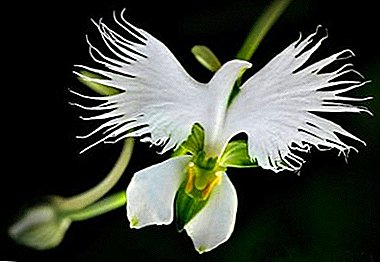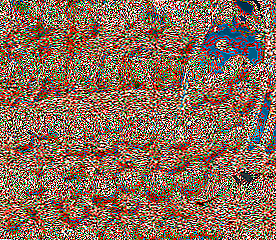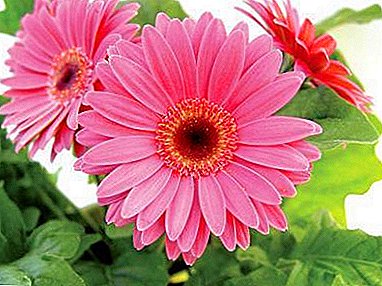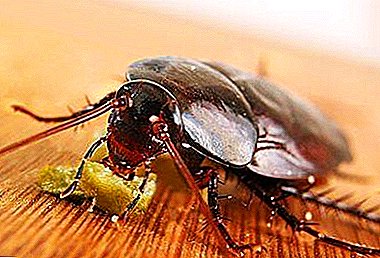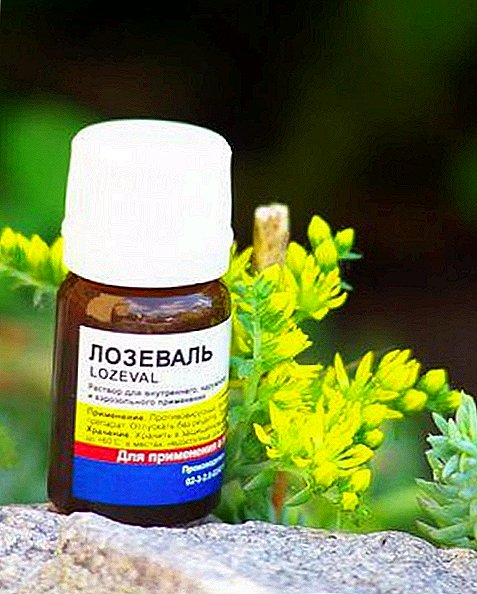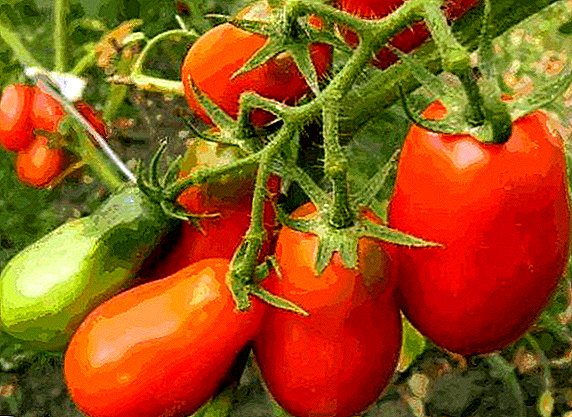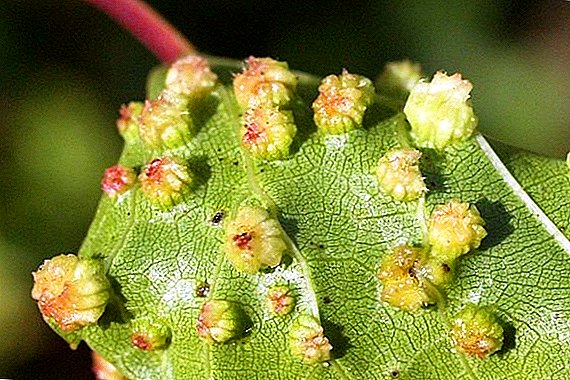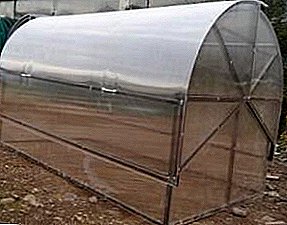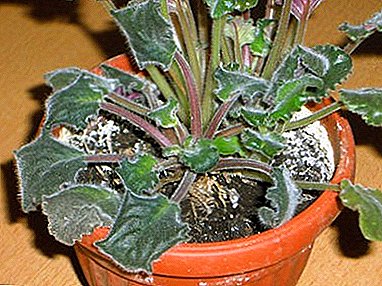 Gloxinia is a perennial herb of the family Gesnerievyh. Their habitat is deciduous forests of South and Central America. In our latitudes, this is one of the most popular indoor plants. It is undemanding, hardy, therefore even beginners are engaged in its cultivation. More advanced flower growers are engaged in breeding new hybrids that appear literally every year. Most often, experiments are put on gloxinia terry - the most beautiful plant species, to which the variety Yesenia also belongs.
Gloxinia is a perennial herb of the family Gesnerievyh. Their habitat is deciduous forests of South and Central America. In our latitudes, this is one of the most popular indoor plants. It is undemanding, hardy, therefore even beginners are engaged in its cultivation. More advanced flower growers are engaged in breeding new hybrids that appear literally every year. Most often, experiments are put on gloxinia terry - the most beautiful plant species, to which the variety Yesenia also belongs.
Gloxinia varieties "Yesenia": description and features
 "Esenia" - the code name of the Dutch hybrid. The variety has a standard bush with medium sized petioles. Although, if you provide him with proper care, it can stretch up to 30 cm in length. The flowers are very large, have the shape of a rose, formed from a set of double petals. May have maroon black or crimson color. But when fully open, a bright border appears on the edges of the petals. Gloxinia "Yesenia" has its own characteristics of the variety - it blooms profusely and for a long time.
"Esenia" - the code name of the Dutch hybrid. The variety has a standard bush with medium sized petioles. Although, if you provide him with proper care, it can stretch up to 30 cm in length. The flowers are very large, have the shape of a rose, formed from a set of double petals. May have maroon black or crimson color. But when fully open, a bright border appears on the edges of the petals. Gloxinia "Yesenia" has its own characteristics of the variety - it blooms profusely and for a long time.
Did you know? For a long time, along with the name "Gloxinia", the term "synningia" was used as a synonym. However, since 2012, the latter have been allocated in an independent form. The reason for this decision were the differences in the root system of plants. Sinningia forms underground tubers, whereas gloxinia allows rhizome, a scaly thickened rhizome. But in some countries, Gloxinia first is considered a garden, and the second - a natural species.
In general, gloxinia "Yesenia" has a similar description with other varieties. Its only difference is terry flowers of stunning deep shade. Features of its behavior are also characteristic of the entire species.
If the rules of its maintenance are grossly violated, the flowers dry, fall off and the plant does not form new buds.
What you need to know about planting terry gloxinia
Planting plan for the beginning of spring. At this time, new shoots are not formed on the tuber. For planting plants take small pots of plastic or clay.
Lighting and temperature content
The plant loves the light, but scattered. It is better to expose it in a well-lit room on the west or east side. So in the morning and in the evening the harmless direct rays of the sun will fall on her, and in a day she will receive enough light.
 If it is impossible to avoid the south side, in the midday hours it is necessary to hide indoor flowers of gloxinia from the dangerous direct rays of the sun, otherwise their tender leaves will get burned and covered with brown spots.
If it is impossible to avoid the south side, in the midday hours it is necessary to hide indoor flowers of gloxinia from the dangerous direct rays of the sun, otherwise their tender leaves will get burned and covered with brown spots.
Therefore, it is recommended to hang a sheet of parchment, foil, a double layer of mosquito nets on the window.
The plant feels bad in a stuffy room, especially on hot days. The most dangerous place is a closed balcony on a hot afternoon. In such conditions, the plant drops buds, leaves dry on it and fall off. It is important not only to ventilate the room, but also to harden the bush itself. But at the same time avoid drafts and sudden changes in temperature.
Gloxinia "Esenia" has the characteristics of a plant that needs a long daylight - at least 14 hours a day.
Therefore, if the daylight is not enough for her, the plant should be illuminated with a fluorescent lamp. Especially when it comes to young plants or seedlings grown from seeds. To do this, use LED lamps with a standard base or fluorescent lamps.
Soil requirements
Telling everything about room gloxinia, it is necessary to pay attention to the soil. For plants suitable substrate for violets, which can be bought at any flower shop. But you can cook it yourself.
To do this, mix these components:
- part of the leafy humus;
- part of the sheet soil;
- part of the river sand;
- two parts of peat;
- two pieces of turf soil.
 The soil should have a weak acid reaction pH = 5.5 - 6.5. But we must remember that by the end of the season it usually has a high salt content, so it must be changed every season.
The soil should have a weak acid reaction pH = 5.5 - 6.5. But we must remember that by the end of the season it usually has a high salt content, so it must be changed every season.
The coconut substrate can be used, but it usually has a slightly alkaline or neutral reaction. To correct acidity, pieces of chopped pine bark are added to it.
Important! In late September, the plant is prepared for winter rest. How to grow gloxinia in this period? It is necessary to reduce watering to light once a month, stop using fertilizers. Within a month, the entire ground part should die out. Then the pot is cleaned in a cool place (10 - 15 ° C) for 4 months. Tuber can be removed from the pot, hidden in moss or sawdust and stored there until February. In the middle of winter, it is transplanted into fresh, moist soil, the ambient temperature is raised, and watering begins.
Planting technology gloxinia "Esenia"
Deciding how to transplant gloxinia at home begins with choosing the right pot. The plant needs a shallow, but wide capacity. Usually they take a pot of the same size, but if the tubers have grown too large, it is worth taking a bigger one.
Drainage should be lined up at its bottom, and clay is not recommended. It is better to take pieces of wine cork, foam.
Did you know? Some growers recommend adding to the soil as a disintegrant a cat litter that contains zeolite. They are mixed with the soil in the ratio of 1: 5. This increases its moisture capacity and does not allow it to stick together.
 The transplanting technique requires that the root be buried in fresh soil by half, since with deep planting it will give only one shoot, on which there will be large leaves, and the plant will lose its decorative effect. When properly planted, a young bush gives about two shoots, and an adult - up to five.
The transplanting technique requires that the root be buried in fresh soil by half, since with deep planting it will give only one shoot, on which there will be large leaves, and the plant will lose its decorative effect. When properly planted, a young bush gives about two shoots, and an adult - up to five.
How to care for the "Yesenia"
The plant is considered undemanding, so you can cope with it, even with a minimum of knowledge in floriculture.
Watering plants
Gloxinia requires frequent watering, especially during the period of vigorous growth and flowering. But make sure that during this procedure, the water does not fall on its leaves and young shoots. Therefore, it is better to use the method of ascending irrigation.
Ensure that water does not stagnate in the soil. When it dries from above, it is necessary to wait a couple more days and only after that water the plant again. Water must be purified, without chlorine and a little warmer than room temperature. Especially dangerous is cold water during the formation of buds and flowering. Closer to autumn, watering is gradually reduced, preparing the plant for the period of winter dormancy.
Important! Sometimes in the fall the plant does not dry out even after the end of flowering. Then it must completely stop watering, put in a cool place. When it is completely fade, cut and leave until mid-winter.
 During the growing season, the plant must be provided with sufficient air humidity - approximately 70 - 80%. But at the same time to use the spray is detrimental to the plant.
During the growing season, the plant must be provided with sufficient air humidity - approximately 70 - 80%. But at the same time to use the spray is detrimental to the plant.
You can remedy the situation by placing a pot near the aquarium by placing a container with water or wet expanded clay next to it.
Soil fertilizer
After planting nutrients plant lasts about one and a half months, after which you need to start feeding. Fertilizers for gloxinia "Yesenia" are used the same as for other flowering houseplants, as well as for violets. They should contain more phosphorus and potassium than nitrogen. They are brought weekly with water for irrigation. Moreover, fertilizers for violets are taken in the dosage twice less than recommended, and for flowering plants - four times less than that indicated on the package.
Reproduction gloxinia
A flower can be diluted in three main ways:
- rooting cuttings.
- tuber division;
- sowing seeds;
Cuttings leaf spend in the summer. The leaf is cut horizontally into three parts, the stalks are removed and inserted vertically into the ground, deepening the cut by 0.5 cm. The pot with the handle is tightened with a film and placed in a warm and bright place where the temperature is kept at + 23 ... +24 ° C.
Every day, the film is removed for airing, removing condensate and moistening the soil. After two or three weeks, young roots should appear at the base of the sheet. Then the sprouts can be transplanted into individual pots and after four months to wait for the first flowering.
 Tuber is divided during a spring transplant. Divide it so that there is a sprout on each delenka. Do not forget to treat the cut sites with charcoal.
Tuber is divided during a spring transplant. Divide it so that there is a sprout on each delenka. Do not forget to treat the cut sites with charcoal.
Each delenka should be planted in a pot with a diameter of not more than 13 cm. While it grows and takes root, the ambient temperature must be at least +20 ° C.
For reproduction through seeds You can buy planting material in a specialized store, and you can, if the plant is already in the house, collect it yourself. In the latter case, during the flowering plants will need to pollinate it. Wait for seeds to mature after forming the box will take about two months. Seeds are sown in February, spreading over the surface of moistened sand and peat soil. Then sowing should be closed with a film and put in a warm place.
Landing will need to light up and air every day for half an hour. The first shoots should appear in two weeks. With their appearance, the greenhouse is removed, the pot is transferred to a bright place. When one or two true leaves appear on the seedlings, they dive into separate pots. After six months, the plants should bloom.
Gloxinia variety "Yesenia" - the main diseases and pests
Gloxinia is susceptible to both common and specific diseases.
 Yellow leaves indicate low humidity, too high temperature, overdose of fertilizers. Brown spots on the leaves appear at sunburn. They may also say that the plant is too cold, especially after watering, or that it is watered with too cold water. Leaves lose their healthy appearance and with high dampness. The plant can be strongly drawn out.
Yellow leaves indicate low humidity, too high temperature, overdose of fertilizers. Brown spots on the leaves appear at sunburn. They may also say that the plant is too cold, especially after watering, or that it is watered with too cold water. Leaves lose their healthy appearance and with high dampness. The plant can be strongly drawn out.
If you violate the conditions of detention may appear powdery mildew or gray rot on flowers and leaves. In such cases, watering is temporarily stopped, the affected parts are removed, and the soil is treated with a systemic fungicide. These are typical gloxinia diseases, and their treatment is carried out by standard methods.
But sometimes a seemingly healthy plant refuses to bloom. This suggests its wrong content: during the rest period it was kept in a too warm and dry place, planted in improper soil, overdone with nitrogen fertilizers, did not provide sufficient light conditions, humidity.
As for pests, the plant suffers from an attack. aphids, nematodes, whiteflies, spider mites, mealybugs, thrips. It is recommended to use insecticides against them, but those that do not cause burns on the leaves. Moreover, it is better to use sprays, rather than spray solutions, since the plant has fleecy leaves.
 Gloxinia "Yesenia" - one of the most beautiful representatives of terry varieties of this indoor plant. The deep saturated color of its flowers does not leave indifferent any grower. In addition, care for her and multiply relatively simple. It is only important not to allow moisture to stagnate in the soil and provide the plant with a sufficient amount of light.
Gloxinia "Yesenia" - one of the most beautiful representatives of terry varieties of this indoor plant. The deep saturated color of its flowers does not leave indifferent any grower. In addition, care for her and multiply relatively simple. It is only important not to allow moisture to stagnate in the soil and provide the plant with a sufficient amount of light.
For the winter, he needs to ensure complete rest, cutting off the remnants of the ground part and removing the pot in a cool place. After transplanting in spring, the flower will for a long time delight with beautiful abundant buds.


